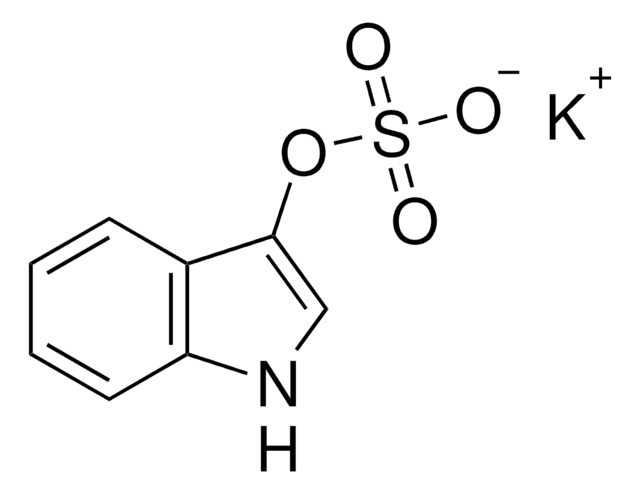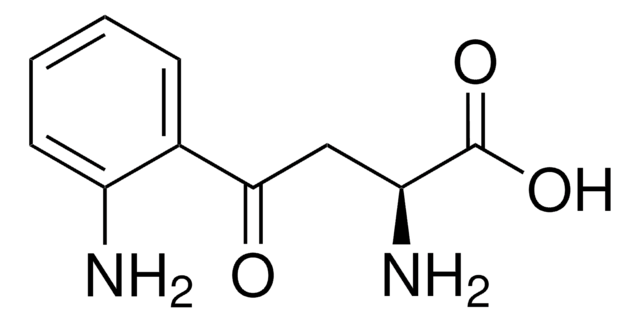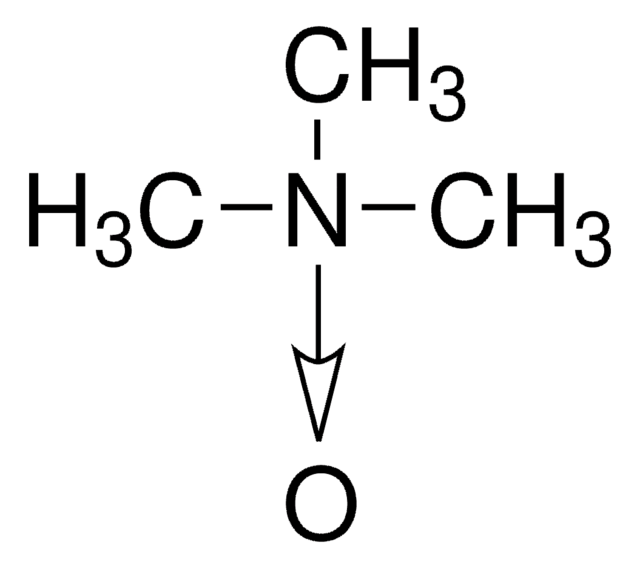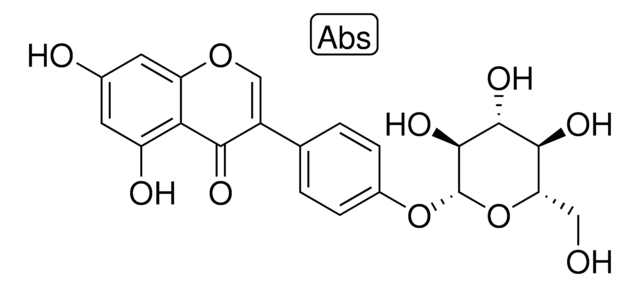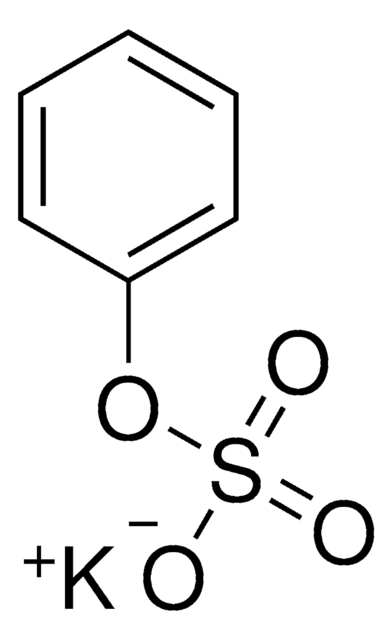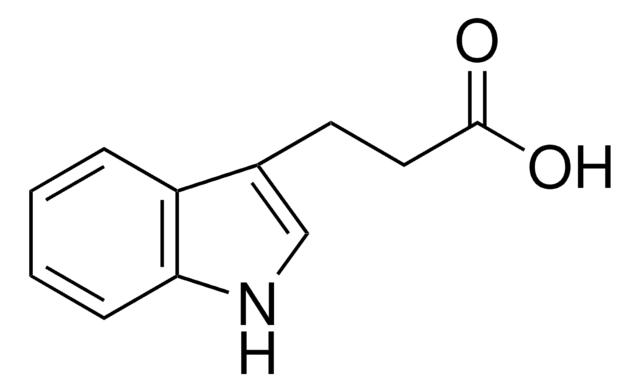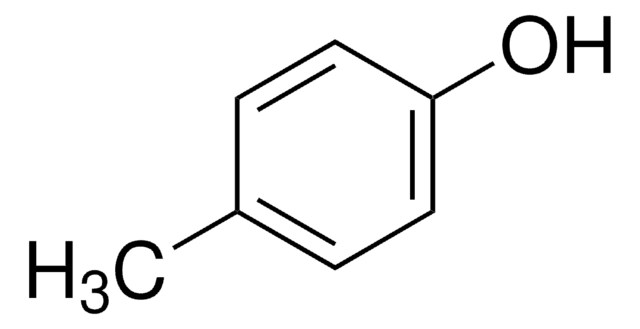SMB00936
Potassium p-tolyl sulfate
≥95%
Synonyme(s) :
p-Methylphenyl potassium sulfate, p-Tolyl sulfate potassium salt, Potassium 4-methylphenyl sulfate
About This Item
Produits recommandés
Source biologique
synthetic
Niveau de qualité
Essai
≥95%
Forme
powder
Score du produit alternatif plus écologique
old score: 39
new score: 21
Find out more about DOZN™ Scoring
Caractéristiques du produit alternatif plus écologique
Less Hazardous Chemical Syntheses
Safer Solvents and Auxiliaries
Inherently Safer Chemistry for Accident Prevention
Learn more about the Principles of Green Chemistry.
sustainability
Greener Alternative Product
Technique(s)
HPLC: suitable
Couleur
off-white
Autre catégorie plus écologique
Température de stockage
2-8°C
Chaîne SMILES
O=S(O)(OC1=CC=C(C)C=C1)=O.[K]
Catégories apparentées
Description générale
Application
Autres remarques
Mention d'avertissement
Danger
Mentions de danger
Classification des risques
Acute Tox. 3 Dermal - Acute Tox. 3 Oral - Aquatic Chronic 2 - Eye Dam. 1 - Skin Corr. 1B
Code de la classe de stockage
6.1A - Combustible acute toxic Cat. 1 and 2 / very toxic hazardous materials
Classe de danger pour l'eau (WGK)
WGK 3
Point d'éclair (°F)
Not applicable
Point d'éclair (°C)
Not applicable
Faites votre choix parmi les versions les plus récentes :
Certificats d'analyse (COA)
Vous ne trouvez pas la bonne version ?
Si vous avez besoin d'une version particulière, vous pouvez rechercher un certificat spécifique par le numéro de lot.
Déjà en possession de ce produit ?
Retrouvez la documentation relative aux produits que vous avez récemment achetés dans la Bibliothèque de documents.
Notre équipe de scientifiques dispose d'une expérience dans tous les secteurs de la recherche, notamment en sciences de la vie, science des matériaux, synthèse chimique, chromatographie, analyse et dans de nombreux autres domaines..
Contacter notre Service technique